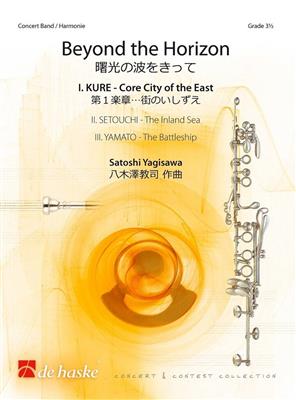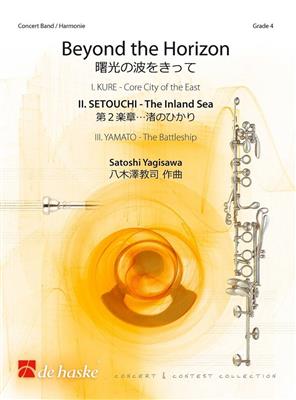Results
-
 £23.95
£23.95SCHERZO Op.68 (Novello Symphonic Band) Extra Score - Bush, Alan
Extra Score only. The fundamental expression of this Scherzo is one of joyful energy. In form, it is a developed rondo, comprising three statements of the main theme (or rather of the main group of themes) and two episodes, together with an introduction, bridge passages and a coda. In each of the three statements of the main group of themes one particular theme appears at the climax, and from it the melodic and rhythmic motifs of the work are all derived. This basic theme is an African melody that has been sung since 1852 by people of African descent in Guiana, South America, in celebration of the abolition of slavery there in that year. Duration: 10 mins.
Estimated dispatch 7-14 working days
-
 £94.95
£94.95SIROCCO (Concert Band) - Graham, Peter
A Sirocco is a wind that originates in the Sahara and sweeps across the Mediterranean through North Africa to Southern Europe. Taking this route as his inspiration, Peter Graham has fashioned a tour-de-force for band that features three Mediterranean folk songs. Two of the three movements are well known in their respective countries. Firstly, the fast and furious Tarantella is commonly heard as part of traditional Italian wedding celebrations whilst the Romanza can justifiably lay claim as one of Spain's most enduring melodies, synonymous with the Spanish guitar. The final movement has its roots in traditional Greek dance music, being a mixture of slow and fast versions of the hasapiko. The best-known example of the form is the famous Zorba's Dance, and in the same manner the Sirtakis sedate opening bars soon give way to a frenzy of activity as the entire ensemble whip up their own musical storm
Estimated dispatch 7-14 working days
-
 £239.99
£239.99Sonata da Chiesa Wind Band Set (Score & Parts)
Sonata da Chiesa for organ and wind orchestra is a work in three movements. The first movement presents three melodic lines which are developed in turn. The second movement introduces a theme by Johann Pachelbel followed by several variations on the theme - a technique favoured by Kees Schoonenbeek. The third movement is a neo-Baroque rondo which introduces thematic elements from the first movement. This is a work rich in colour and sound. 0:14:00
Estimated dispatch 7-14 working days
-
 £144.99
£144.99The Bartered Bride Wind Band Set (Score & Parts)
The Bartered Bride (Czech: Prodan? nev??sta, The Sold Fianc?e) is the second opera, a comedy in three acts, by Bed?ich Smetana. The Czech libretto was written by Karel Sabina, who had also written the libretto for Brandenburgers in Bohemia. Composed in 1863-1866, the work was originally envisioned as an operetta, a light opera with spoken dialogue in place of sung recitatives. It was first performed in this form in 1866 in Prague. The definitive version of the work, now an opera buffa, was finished in 1870 and was performed the same year. The opera's overture and three dances are part of the orchestral repertoire. 06:30
Estimated dispatch 7-14 working days
-
 £74.25
£74.25Thor's Hammer (Concert Band - Score and Parts)
This march pays tribute to three greats of march music: Karl King, Russell Alexander, and John Philip Sousa. Commissioned by the Naperville (Ill.) Municipal Band on the occasion of conductor Ron Keller's 50th year as conductor, this march pays homage to the three great march kings.
Estimated dispatch 7-14 working days
-
 £134.99
£134.99Talisman - Thierry Deleruyelle
Talisman tells the story of the "Pierre du Serment", an event that took place in 1639 in the village of Fontenotte, on the border between France and Switzerland. Composed of three brothers and their parents, the Billod family lived peacefully on their farm despite the Thirty Years' War raging around them. When their father was captured by the Swedish mercenaries who plundered the farm, the three brothers vowed to save him, carving their pact in stone according to a Celtic and Viking tradition.Commissioned by the Orchestre d'Harmonie de Montlebon for its centenary, this work pays tribute to a local story that has become a legend. The conductor, Jean-Pierre Frigo, wanted this commission to mark the orchestra's presence within the region.
Estimated dispatch 7-14 working days
-
 £66.95
£66.95Quest of the Magi - Brian Beck
The Quest of the Magi was one of the working titles for John Henry Hopkins Jr.'s famous carol, "We Three Kings." Written in 1857 for a Christmas pageant in New York City, "We Three Kings" tells the tale of the Magis' journey to find a newly born king in a faraway land and the precious gifts they brought with them. This piece focuses more on the journey of "following yonder star." Traveling across many countries in the first century was a perilous task, full of danger, thievery, and possible death, not to mention these men were traveling with some of the most precious and expensive cargo one could possess. This piece chronicles the magi acquiring myrrh, frankincense, and gold for their journey. Each treasure is represented by its own motif and woven into Hopkins' original carol. (2:45)
Estimated dispatch 7-14 working days
-
 £58.50
£58.50Pirate Kings from the East - S. Watson
In Pirate Kings from the East, composer Scott Watson re-imagines the legendary journey of the Three Kings, musically transporting the action from the desert to the high seas, swapping the traditional caravan of camels with a fearsome tall ship and pirate crew! Bold themes, triple-meter sea-shanty rhythms, and exciting percussion contribute to the high-spirited adventure. At the stirring conclusion of this buccaneer drama, one can almost hear the maritime Magi heartily proclaiming, "We Three Kings of Orient... ARRRGH!" (2:45)The PerformancePlus+ series is an innovative addition to the ever-expanding MakeMusic Cloud interactive library. These engaging selections are presented with educational resources designed to enrich the rehearsal process and create outstanding performances. Including:Assignment, recording, and assessment tools within MakeMusic CloudPiece-specific exercises focused on skills and techniquesPrintable sheet music (with a standard MakeMusic Cloud subscription)Educational tips and suggestions to support learningAvailable in print and digital formats.
Estimated dispatch 7-14 working days
-
 £99.99
£99.99Beyond the Horizon - I. KURE-Core City of the East - Satoshi Yagisawa
Beyond the Horizon is available in three separate movements that each can be played independently, but also link up with each other perfectly to form a rounded whole. Thus it is possible to perform the complete three-movement work, but you can also choose to play one of the movements. The first movement, 'Kure', describes the lively Japanese city of the same name and its surroundings. Movement two, 'Setouchi', reflects the local inland sea. The third movement, 'Yamato', is all about the battleship that was built at the naval shipyard of Kure. Three expressive pieces of music full of atmosphere!DHP 1256483-010 - I. KURE - Core City of the EastDHP 1256484-010 - II. SETOUCHI - The Inland SeaDHP 1256485-010 - III. YAMATO - The Battleship
Estimated dispatch 7-14 working days
-
 £68.99
£68.99Beyond the Horizon - II. SETOUCHI-The Inland Sea - Satoshi Yagisawa
Beyond the Horizon is available in three separate movements that each can be played independently, but also link up with each other perfectly to form a rounded whole. Thus it is possible to perform the complete three-movement work, but you can also choose to play one of the movements. The first movement, 'Kure', describes the lively Japanese city of the same name and its surroundings. Movement two, 'Setouchi', reflects the local inland sea. The third movement, 'Yamato', is all about the battleship that was built at the naval shipyard of Kure. Three expressive pieces of music full of atmosphere!DHP 1256483-010 - I. KURE - Core City of the EastDHP 1256484-010 - II. SETOUCHI - The Inland SeaDHP 1256485-010 - III. YAMATO - The Battleship
Estimated dispatch 7-14 working days
